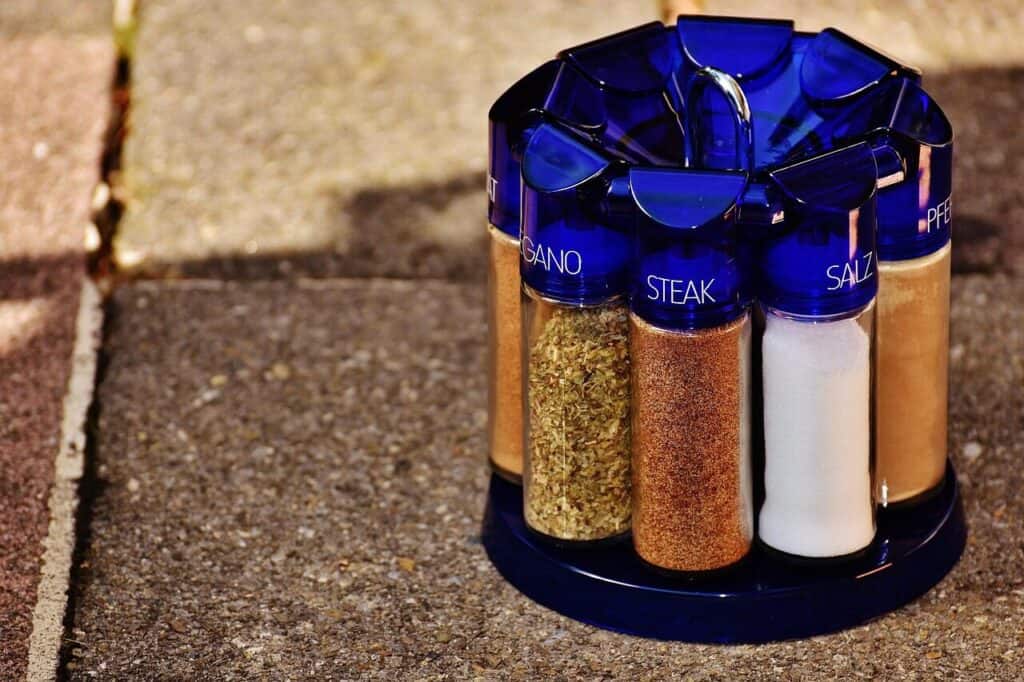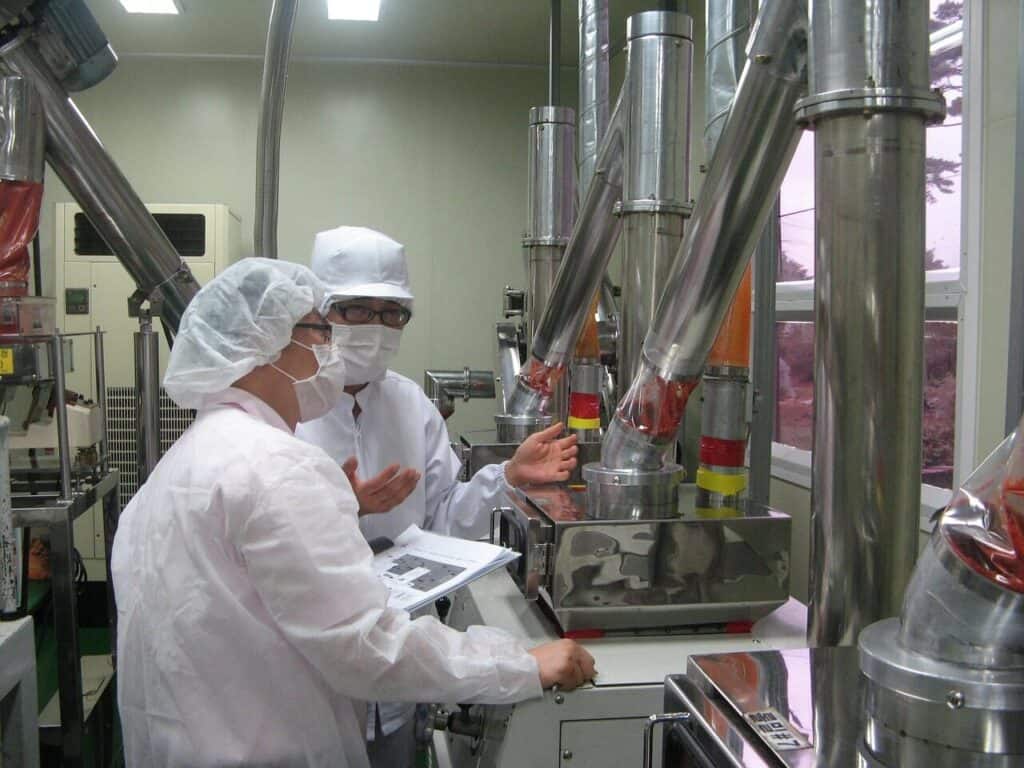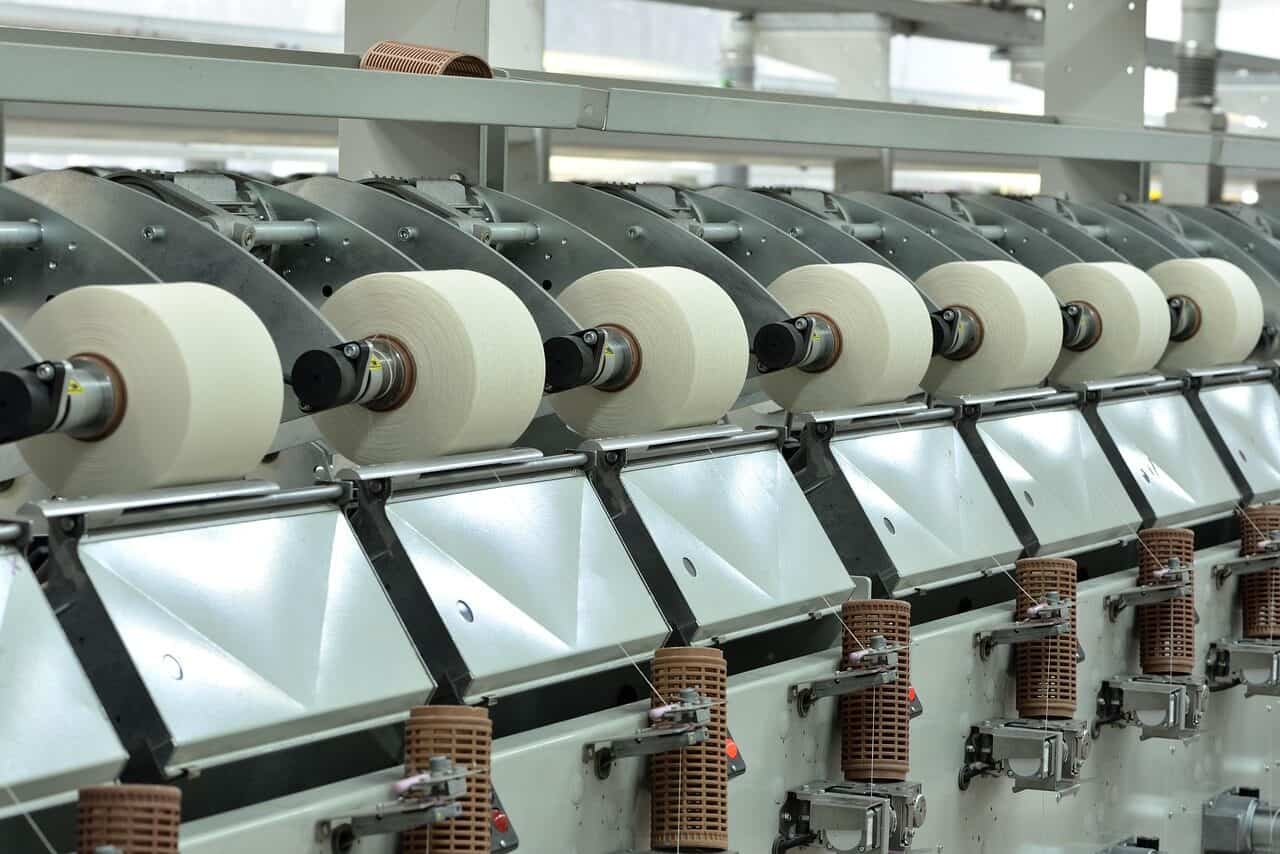Une plongée technique dans le dépistage des ingrédients : Principes, méthodes et mise en œuvre
La qualité d'un produit final dépend entièrement de la qualité de ses matières premières. Aucune transformation ultérieure ne peut corriger un mauvais ingrédient de départ.
La sélection des ingrédients est le processus scientifique et minutieux qui consiste à tester ces matières premières. Il permet de vérifier l'identité, la pureté, la sécurité et la conformité aux normes établies.
avant qu'ils n'entrent en production.
Ce processus constitue la première défense de la sécurité des produits, de l'intégrité de la chaîne d'approvisionnement et de la réputation de la marque.
Dans ce guide, nous allons explorer les
principes scientifiques fondamentaux qui sous-tendent un dépistage efficace. Nous comparerons les principales méthodes de test et fournirons un cadre pratique pour la mise en œuvre d'un programme solide de contrôle des ingrédients dans votre organisation.
Les piliers fondamentaux du dépistage
Le contrôle technique des ingrédients n'est pas facultatif. Il s'agit d'un pilier indispensable de la fabrication moderne. Les raisons pour lesquelles il est utilisé sont les exigences réglementaires, la sécurité des consommateurs, la cohérence des produits et la protection économique.
Conformité réglementaire : Les organismes de réglementation internationaux exigent des contrôles stricts sur les matières premières. La loi de modernisation de la sécurité alimentaire (FSMA) de la FDA exige des importateurs qu'ils mènent des activités de vérification des fournisseurs étrangers basées sur les risques. Une clause spécifique, la règle des programmes de vérification des fournisseurs étrangers (FSVP), stipule clairement que les importateurs doivent vérifier que leurs fournisseurs étrangers produisent des aliments qui offrent le même niveau de protection de la santé publique que celui exigé des producteurs nationaux. Des exigences similaires existent dans le cadre de l'Autorité européenne de sécurité des aliments (EFSA) et d'autres agences internationales.
Consommateur Sécurité & Santé publique: La fonction la plus importante du dépistage des ingrédients est de prévenir les dommages. Cela signifie qu'il faut détecter les bactéries nocives telles que Salmonelle ou *E. coli*, des allergènes non déclarés qui peuvent mettre la vie en danger, et des contaminants chimiques tels que les métaux lourds, les pesticides ou les sous-produits industriels.
Qualité des produits & Cohérence: Au-delà de la sécurité, le criblage garantit la performance du produit. Les modifications de la concentration en composés actifs, de la taille des particules ou de la teneur en humidité d'une matière première peuvent avoir une incidence considérable sur l'efficacité, le goût, la texture et la durée de conservation du produit final. Des intrants cohérents sont essentiels pour obtenir des résultats cohérents.
Protection économique et protection de la marque : Un seul défaut de qualité peut avoir des conséquences financières désastreuses. Les coûts directs d'un rappel de produit sont énormes, mais les dommages à long terme causés à la réputation de la marque et à la confiance des consommateurs peuvent être encore plus graves. Le contrôle des ingrédients est également un moyen de défense essentiel contre la fraude économique, lorsqu'un ingrédient de valeur est malhonnêtement remplacé ou dilué par une substance moins chère.
Ventilation des méthodologies de base
Il est essentiel de comprendre les outils analytiques disponibles pour concevoir un programme de dépistage efficace. Chaque méthode a des principes, des applications, des forces et des limites qui lui sont propres. Elles ne sont pas interchangeables mais fonctionnent ensemble comme une boîte à outils.
Méthodes spectroscopiques
La spectroscopie étudie la façon dont la matière interagit avec le rayonnement électromagnétique. En mesurant la façon dont un échantillon absorbe, émet ou diffuse la lumière, nous pouvons en savoir plus sur sa composition chimique et sa structure moléculaire.
Infrarouge à transformée de Fourier (FTIR) Spectroscopie mesure l'absorption de la lumière infrarouge, qui fait vibrer les liaisons chimiques au sein d'une molécule. Comme chaque molécule possède une combinaison unique de liaisons, elle produit un spectre d'absorption distinct, souvent appelé “empreinte” chimique.”
Sa principale utilisation dans la sélection des ingrédients est la confirmation rapide de l'identité. En comparant le spectre FTIR d'un matériau entrant à celui d'un étalon de référence connu et vérifié, un analyste peut confirmer son identité en moins d'une minute. Il est particulièrement efficace pour vérifier les poudres, les liquides et les polymères en vrac.
Spectroscopie dans le proche infrarouge (NIR) fonctionne selon un principe similaire, mais utilise une autre partie du spectre lumineux. Les schémas d'absorption dans la région du proche infrarouge sont liés aux harmoniques et aux combinaisons de vibrations moléculaires, en particulier celles qui impliquent des liaisons hydrogène (par exemple, O-H, C-H, N-H).
Le proche infrarouge est un outil puissant pour mesurer les propriétés en vrac. Il permet de mesurer rapidement des paramètres tels que l'humidité, la teneur en matières grasses, en protéines et en fibres de matériaux tels que les céréales, les farines et les poudres laitières. Sa vitesse lui permet d'être utilisé en ligne, fournissant des données en temps réel directement sur le quai de réception ou dans l'atelier de production.
Spectroscopie Raman offre une vision différente de la FTIR. Au lieu de mesurer la lumière absorbée, elle mesure la diffusion inélastique de la lumière d'une seule longueur d'onde provenant d'un laser. Cette lumière diffusée fournit des informations sur les modes de vibration de la molécule.
L'un des principaux atouts du Raman est sa capacité à analyser des échantillons dans des emballages transparents, tels que des flacons en verre ou des sacs en plastique, ce qui réduit la manipulation des échantillons et les risques de contamination. Il est également très insensible à l'eau, ce qui le rend idéal pour l'analyse de solutions aqueuses et d'échantillons humides pour lesquels la FTIR pose problème.
Méthodes chromatographiques
La chromatographie est la science de la séparation. Le principe de base consiste à faire passer un mélange d'échantillons (la phase mobile) à travers un milieu (la phase stationnaire). Les différents composants du mélange se déplacent à des vitesses différentes, ce qui entraîne leur séparation.
Haute performance Chromatographie liquide (HPLC) est une technique fondamentale pour une analyse précise. Elle utilise une pression élevée pour faire passer un échantillon liquide à travers une colonne remplie d'un matériau solide. Les composants se séparent en fonction de leurs interactions chimiques avec le matériau de la colonne.
La CLHP est le cheval de bataille de la séparation, de l'identification et de la mesure précise des composés non volatils ou sensibles à la chaleur. Elle permet notamment de tester les ingrédients pharmaceutiques actifs (IPA), de mesurer les niveaux de conservation, de quantifier les vitamines et les sucres et de détecter les contaminants tels que les mycotoxines ou les colorants illégaux.
Chromatographie gazeuse-spectrométrie de masse (GC-MS) est une technique combinée puissante considérée comme un “étalon-or” pour de nombreuses applications. Le processus comporte deux étapes : tout d'abord, un chromatographe en phase gazeuse (CG) sépare les composants volatils d'un échantillon à l'état gazeux.
Lorsque chaque composant séparé sort du CG, il entre dans un spectromètre de masse (SM), qui le bombarde d'électrons, le divisant en fragments chargés. Le spectromètre de masse identifie ensuite le composant grâce à son rapport masse/charge unique. Cette double vérification rend la CG-SM exceptionnellement spécifique et sensible pour la détection des impuretés volatiles, des solvants résiduels de la fabrication, des pesticides et des profils complexes d'arômes et de parfums.
Autres techniques clés
Des méthodes plus avancées comme Réaction en chaîne par polymérase (PCR) permettent une détection rapide et hautement spécifique des agents pathogènes dangereux. La PCR fonctionne en amplifiant une séquence d'ADN spécifique propre à un organisme cible, telle que Salmonelle ou *Listeria*, ce qui permet une détection en quelques heures plutôt qu'en quelques jours.
Analyse des propriétés physiques garantit qu'un ingrédient fonctionnera correctement dans une formulation. Des techniques simples mais essentielles telles que
Tamisage sont utilisées pour déterminer la distribution de la taille des particules, qui affecte les taux de dissolution et la texture.
Mesure de la densité et les tests de viscosité sont cruciaux pour les
les ingrédients pour assurer un mélange et un dosage corrects.
Méthode | Principe sous-jacent | Primaire Cas d'utilisation pour le contrôle des ingrédients | Vitesse | Spécificité | Coût typique |
FTIR | Mesure l'absorption de la lumière infrarouge par les liaisons moléculaires, créant ainsi une “empreinte digitale” unique.” | Vérification rapide de l'identité de matériaux connus (par exemple, confirmation que le lactose est bien du lactose). | Très rapide (<1 min) | Modérée-élevée | Faible-Moyen |
HPLC | Séparation physique des composants dans un flux liquide, suivie d'une détection. | Quantification des ingrédients actifs, des conservateurs, des sucres et de certains contaminants. | Modéré (20-60 min) | Haut | Moyenne-élevée |
GC-MS | Séparation des composés volatils suivie d'une identification par la masse. | “L'étalon-or” pour la détection des pesticides, des solvants résiduels et des adultérants d'arômes. | Lent (>60 min) | Très élevé | Haut |
NIR | Mesure l'absorption de la lumière infrarouge proche, en corrélation avec la composition chimique en vrac. | Quantification rapide de l'humidité, des matières grasses et des protéines dans les matières premières telles que les céréales et les poudres. | Très rapide (<1 min) | Faible-modéré | Moyen |
PCR | Amplification de séquences d'ADN spécifiques. | Détecter la présence de pathogènes microbiens spécifiques (*Salmonella*, *Listeria*). | Rapide (2-4 heures) | Très élevé | Moyen |
Conception d'un programme fondé sur les risques
Connaître les méthodes ne représente que la moitié de la bataille. Une mise en œuvre efficace nécessite une approche stratégique, basée sur les risques, qui concentre les ressources là où elles sont le plus nécessaires, maximisant ainsi la sécurité et l'efficacité.
Étape 1 : Évaluation des risques
Tous les ingrédients et fournisseurs ne présentent pas le même niveau de risque. Un programme d'essai unique est à la fois inefficace et sans effet. La base d'un programme intelligent est une évaluation complète des risques pour chaque matière première.
Cela se fait souvent à l'aide d'une matrice de risques. Cette matrice évalue les ingrédients sur la base de deux facteurs clés : la vulnérabilité inhérente de l'ingrédient et la gravité potentielle du danger.
La vulnérabilité des ingrédients tient compte de facteurs tels que l'historique de la fraude économique, la complexité de la chaîne d'approvisionnement et l'origine. La gravité du danger fait la distinction entre un problème de sécurité critique (par exemple, un agent pathogène) et un problème de qualité ou de performance (par exemple, une taille de particule incorrecte).
Par exemple, un ingrédient à haut risque comme le miel biologique, connu pour la fraude au sirop de sucre et provenant d'une chaîne d'approvisionnement mondiale complexe, se verrait attribuer un score de risque élevé. Cette évaluation nécessite un protocole de contrôle des ingrédients plus strict, comprenant éventuellement une analyse isotopique avancée, pour chaque lot entrant. En revanche, un ingrédient à faible risque comme le chlorure de sodium provenant d'un fournisseur national unique et hautement qualifié nécessiterait un plan de contrôle beaucoup moins intensif.
Ingrédient | Risque(s) potentiel(s) | Source (Complexité de la chaîne d'approvisionnement) | Probabilité (1-5) | Sévérité (1-5) | Score de risque (L x S) | Mesure de contrôle requise |
Exemple : Lait en poudre | Mélamine, Salmonelle | Sources mondiales multiples | 4 | 5 (Sécurité) | 20 | Micro-test complet + GC-MS pour la mélamine sur chaque lot. |
Exemple : Citrique Acide | Mauvaise qualité, métaux lourds | Fabrication qualifiée unique. | 2 | 3 (Qualité) | 6 | Contrôle d'identité FTIR sur chaque lot ; contrôle trimestriel des métaux lourds. |
Exemple : Sel | Insolubles | Source domestique, minière | 1 | 2 (Qualité) | 2 | Inspection visuelle ; examen du certificat d'analyse. |
Étape 2 : Définition des spécifications
L'évaluation des risques nous indique ce qui doit être testé. La fiche de spécification des ingrédients définit les résultats acceptables. Ce document constitue la norme technique et juridique par rapport à laquelle chaque lot de matériel entrant est jugé.
Une bonne fiche de spécification est claire. Elle définit clairement les paramètres à tester, les limites ou fourchettes acceptables pour chaque paramètre et la méthode analytique spécifique à utiliser pour le test.
Ce document devient le contrat entre votre entreprise et votre fournisseur. Il élimine toute confusion et fournit une base claire pour l'acceptation ou le rejet d'un envoi. Sans spécifications claires, les essais n'ont pas de sens.
Paramètres | Spécification / Limite | Méthode d'essai |
Identification | Correspondance positive avec la norme de référence | FTIR |
Apparence | Poudre verte fine et homogène | Visuel |
Essai (Menthol) | NLT 1.2% | HPLC ou GC-MS |
Humidité | NMT 8.0% | Perte au séchage / Karl Fischer |
Cendres totales | NMT 12.0% | USP |
Nombre total de plaques | < 100 000 UFC/g | USP |
Salmonella spp. | Négatif dans 25g | PCR ou USP |
Étape 3 : Gestion des fournisseurs
Le contrôle des ingrédients n'existe pas seul. Il s'agit d'un élément essentiel d'un programme plus large de gestion de la qualité des fournisseurs. L'objectif est d'établir des partenariats avec des fournisseurs fiables qui fournissent constamment des matériaux de haute qualité.
La sélection joue un rôle clé dans ce processus. Pour un nouveau fournisseur qui n'a pas encore fait ses preuves, il est judicieux de mettre en place un programme de tests intensifs et complets sur chaque lot. Cela permet d'établir un historique des performances fondé sur des données.
Dans le cas d'un partenaire de confiance de longue date qui a fait ses preuves, la fréquence et l'intensité des contrôles peuvent souvent être réduites de manière stratégique. Il peut s'agir de passer à des tests sur des lots de produits ou de s'appuyer davantage sur le certificat d'analyse du fournisseur, avec des tests de vérification périodiques pour s'assurer de la continuité de la conformité. Le programme reste souple et axé sur les données.
Étude de cas : Authentification des plantes médicinales
Le marché des compléments alimentaires et des médicaments à base de plantes présente un défi particulièrement complexe pour la sélection des ingrédients. Les plantes médicinales de grande valeur sont une cible privilégiée pour la substitution et la fraude, lorsqu'une matière végétale coûteuse est remplacée par une espèce moins chère, visuellement similaire ou apparentée.
Les méthodes traditionnelles peuvent échouer dans ce contexte. Une simple inspection visuelle est facilement trompée. Même un test chimique tel que l'IRTF peut ne pas être en mesure de faire la distinction entre des espèces étroitement liées au sein de la même famille de plantes, qui peuvent avoir des empreintes chimiques similaires mais des composés actifs ou des profils de sécurité très différents.
C'est là qu'une technique avancée, le **DNA Barcoding**, apporte une solution définitive.
Le principe technique est élégant. Tout comme le code-barres d'un supermarché identifie un produit de manière unique, le code-barres ADN utilise une courte région standardisée de l'ADN d'un organisme pour l'identifier au niveau de l'espèce. Cette séquence génétique est unique et cohérente au sein d'une espèce, mais varie d'une espèce à l'autre.
La puissance de cette méthode a été mise en évidence lors d'une enquête largement médiatisée menée en 2013 par le bureau du procureur général de New York sur les compléments alimentaires à base de plantes. L'étude a utilisé des tests ADN pour révéler qu'un pourcentage important des produits testés ne contenait pas les plantes indiquées sur l'étiquette ou était contaminé par des ingrédients non répertoriés, ce qui a entraîné un bouleversement majeur de l'industrie.
Collecte d'échantillons : Un petit échantillon de la poudre ou de l'extrait botanique brut est prélevé dans le lot entrant.
Extraction et amplification de l'ADN : L'ADN est isolé chimiquement à partir du matériel végétal. La région spécifique du “code-barres” est ensuite amplifiée des millions de fois par PCR.
Séquençage et comparaison : La séquence de l'ADN amplifié est “lue” par un séquenceur génétique. Cette séquence est ensuite comparée à une base de données de référence validée, telle que le Barcode of Life Data System (BOLD).
Résultat : La comparaison renvoie clairement une “correspondance” ou une “absence de correspondance” avec l'espèce attendue.
Cette méthode avancée de sélection des ingrédients offre un niveau de certitude inégalé pour les ingrédients botaniques de grande valeur et à haut risque. Elle va au-delà de la vérification d'un marqueur chimique spécifique et répond plutôt à la question fondamentale : “Cet ingrédient est-il dérivé de la bonne espèce végétale ? ”Cet ingrédient est-il dérivé de la bonne espèce végétale ?"
L'avenir du dépistage
Le domaine du contrôle des ingrédients est en constante évolution, sous l'impulsion de nouvelles technologies et demandes d'analyse. Il est essentiel de se tenir au courant de ces tendances pour maintenir un programme de qualité de pointe.
Portabilité et miniaturisation : Le développement d'appareils d'analyse portatifs constitue une tendance majeure. Les spectromètres NIR et Raman portables permettent désormais d'effectuer un dépistage rapide, de qualité laboratoire, directement sur le quai de réception ou dans l'entrepôt. Cela réduit considérablement les délais d'exécution et permet de prendre des décisions immédiates sur les lots entrants sans avoir à envoyer les échantillons à un laboratoire central.
Intelligence artificielle (IA) et apprentissage automatique : L'IA est sur le point de révolutionner la façon dont nous interprétons les données analytiques. Les algorithmes d'apprentissage automatique peuvent être formés sur de vastes ensembles de données provenant de techniques telles que la spectroscopie ou la chromatographie. Ils peuvent apprendre à reconnaître les schémas subtils et complexes associés à l'origine d'un matériau, à sa méthode de traitement ou même à une fraude de bas niveau qui pourrait être invisible à l'œil humain, créant ainsi des modèles d'authentification plus robustes et plus sensibles.
Dépistage non ciblé : Traditionnellement, le dépistage est “ciblé”, ce qui signifie que nous testons la présence d'une liste connue de composés ou de contaminants. L'avenir s'oriente vers un dépistage “non ciblé”. Grâce à des instruments puissants tels que la spectrométrie de masse à haute résolution, les analystes peuvent créer un profil chimique complet d'un ingrédient “étalon-or”. Les lots entrants peuvent alors être contrôlés pour tous Les différences chimiques par rapport à cette norme permettent de détecter des adultérants nouveaux, inattendus ou inconnus jusqu'à présent.
Blockchain pour la traçabilité de la chaîne d'approvisionnement : Bien qu'il ne s'agisse pas d'une technique d'analyse directe, la technologie blockchain offre un nouveau paradigme pour l'intégrité des données. Elle peut être utilisée pour créer un grand livre numérique sécurisé, immuable et transparent qui suit le parcours d'un ingrédient de la ferme à l'usine. Les données de contrôle, les certificats d'analyse et les registres de conservation peuvent être liés à chaque étape, ce qui offre un niveau de confiance sans précédent et une traçabilité de bout en bout tout au long de la chaîne d'approvisionnement.
Conclusion
Un solide programme de contrôle des ingrédients n'est pas un centre de coûts. Il s'agit d'un investissement fondamental dans la qualité des produits, la sécurité des consommateurs et l'image de marque. Il s'agit d'une discipline à multiples facettes qui nécessite une synthèse de la chimie analytique, de la microbiologie et de la gestion stratégique des risques.
En comprenant les principes techniques des principales méthodologies et en mettant en œuvre un programme dynamique basé sur les risques, les entreprises peuvent passer d'une position réactive à une position proactive en matière de qualité.







